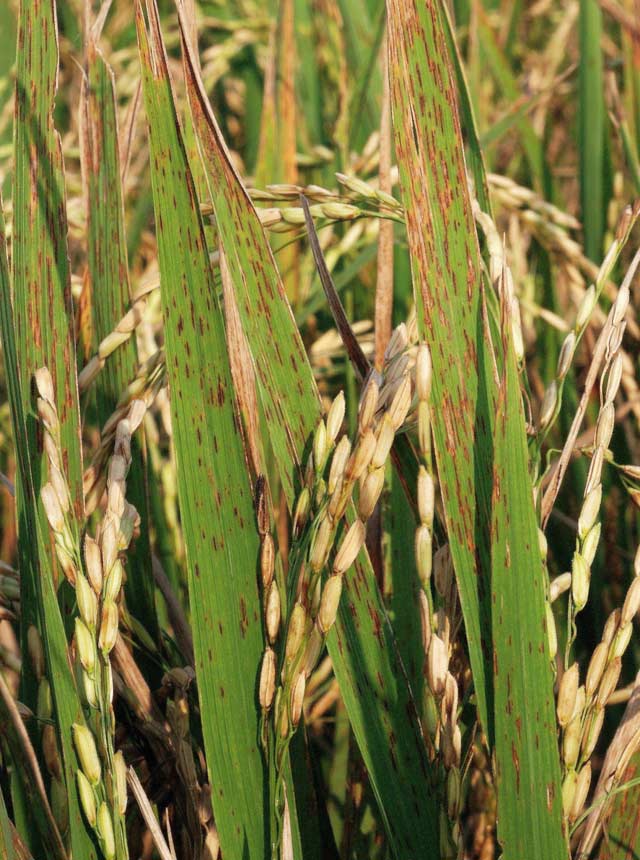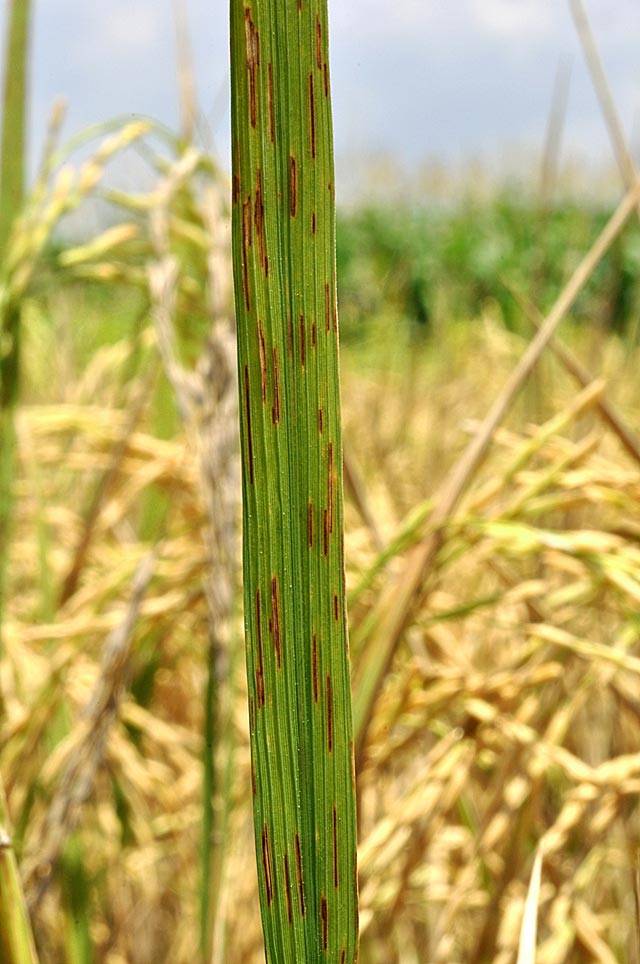Narrow brown spot
 What it does
What it does
Narrow brown spot (also called narrow brown leaf spot, or rice Cercospora leaf spot) is caused by the fungus Sphaerulina oryzina (syn. Cercospora janseana, Cercospora oryzae) and can infect leaves, sheaths, and panicles.
It leads to premature death of leaves and leaf sheaths, premature ripening of grains, and in severe cases, lodging of plants.
Why and where it occurs
Narrow brown spot has been reported from rice-growing regions in the tropics and subtropics of Asia, Africa, Australia, and North, Central, and South America and Papua New Guinea.
The disease usually occurs in potassium deficient soils, and in areas with temperature ranging from 25−28°C.
It appears during the late growth stages of the rice crop, starting at heading stage.
Plants are most susceptible during panicle initiation onwards, and damage becomes more severe as plants approach maturity.
Why is it important
Severe damage caused by narrow brown spot decreases the market value of the grains and reduces the milling recovery.
In terms of yield loss, only occasional severe epidemics are known; and generally, narrow brown spot has no significant economic implication.
 How to identify
How to identify
Check for lesions:
- Typical lesions on leaves and upper leaf sheath are light to dark brown, linear, and progress parallel to the vein. They are usually 2−10 mm long and 1−1.5 mm wide.
- Lesions on the leaves of highly susceptible varieties may enlarge and connect together, forming brown linear necrotic regions.
- On glumes, lesions are usually shorter but can be wider than those on the leaves. Brown lesions are also found on pedicels.
- The disease also causes discoloration on the leaf sheath, referred to as “net blotch” because of the netlike pattern of brown and light brown to yellow areas.
Narrow brown spot can be confused with white leaf streak. Linear lesions make the disease distinct from other leaf diseases.
How to manage
- Use resistant varieties. Contact your local agriculture office for up-to-date lists of varieties available.
- Keep fields clean.
- Remove weeds and weedy rice in the field and nearby areas to remove alternate hosts that allow the fungus to survive and infect new rice crops.
- Use balanced nutrients; make sure that adequate potassium is used.
- If narrow brown spot poses a risk to the field, spray propiconazole at booting to heading stages.
Content experts: Adam Sparks (email: a.sparks@irri.org), NP Castilla, and S Savary